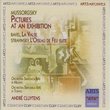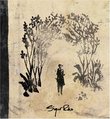| All Artists: Sigur Ros Title: Med Sud I Eyrum Vid Spilum Endalaust Members Wishing: 2 Total Copies: 0 Release Date: 11/18/2008 Album Type: Import Genres: Alternative Rock, Special Interest Styles: Indie & Lo-Fi, Experimental Music Number of Discs: 2 SwapaCD Credits: 2 Other Editions: Deluxe Edition: Med Sud I Eyrum Vid Spilum Endalaust UPCs: 5099923772823, 634904036485 |
Search - Sigur Ros :: Med Sud I Eyrum Vid Spilum Endalaust
 | Sigur Ros Med Sud I Eyrum Vid Spilum Endalaust Genres: Alternative Rock, Special Interest
Limited edition deluxe two disc (CD + PAL/Region 2 DVD) individually numbered pressing of their 2008 album contains the album, a DVD including two films plus the banned video to the track 'Gobbledigook' (nominated for Vide... more » |
Larger Image |
CD DetailsSynopsis
Album Description Limited edition deluxe two disc (CD + PAL/Region 2 DVD) individually numbered pressing of their 2008 album contains the album, a DVD including two films plus the banned video to the track 'Gobbledigook' (nominated for Video of the Year), a 196-page hardcover cloth-bound book of photographs shot by Eva Vermandel and a unique strip of 16mm film from the 'Gobbledigook' video shoot specially mounted within the front cover of the book! This limited edition set was originally only available through their official website. EMI. 2008. Similar CDs
|
CD ReviewsWith a buzz in our ears, we play endlessly... Sor_Fingers | Boulder, CO USA | 06/24/2008 (5 out of 5 stars) "That is what Sigur Ros's 2008 studio album, Með suð í eyrum við spilum endalaust, translates to in English. This album sees the band breaking some new ground. This album is essentially a follow-up to two different Sigur Ros projects: the first being the emotional tour-de-force Takk... and the band's recent documentary, Heima, in which the band travels all over the Icelandic countryside doing shows for the people of the villages, many of them with very stripped down acoustic sets. If you've heard the first single, Gobbledigook, and you think Sigur Ros has sold out, think again. Granted this song is very much outside of their artistic tendencies, but this opening cut is really an outlier on the album. The rest of the album is very much a more optimistic, nonetheless, very Sigur Ros album. While we hear songs of epic scale like "Festival" and "Ara batur," we also hear more folky, stripped down arrangements from the band, most notably in "Illgresi." I think Sigur Ros is trying with this album to appeal to a broader audience without losing their soul to the music industry, and I think they've done it. This is evidenced by the band using more conventional and complicated song structures rather than repeating structures that unfold in an ebb and flow kind of way, varied instrumentation, shorter song lengths, shorter overall album length, and surprisingly enough, one song with ENGLISH lyrics. I think the band has found a niche with this album, being able to appeal to more than the people who listen to what Pitchfork media and Bob Boilen tell them to listen to, and yet, I think Pitchfork media and Bob Boilen will also tell us to listen to them. I think that with Með suð í eyrum við spilum endalaust, the music snobs (of which I am a proud member) and the general public will find common ground. And with the nude frolickers on the cover art, who wouldn't at least be intrigued by this quartet from Iceland led by a guy who prefers to play his guitar with a cello bow?" An ad for this album in the New Yorker Charles Wells | Sedona | 07/16/2008 (5 out of 5 stars) "An ad for the album in the New Yorker, with nudes running across a country road on the cover, caught my eye. I found myself trying to translate the words on the cover, and I couldn't even figure out the language. Even the script was unusual. It would be weeks before release date but I got to hear this incredibly powerful, yet simple and awesome music, for the first time on the internet, and it was love at first hearing. New to the computer, it was also the first album purchase via the net. The music was like nothing I've heard in my seventy seven years. I can't get over that I am hooked on what I thought would be essentially music for young people. This music is for all ages. Songs five, six, and seven are staggeringly beautiful and give me horripilations and exaltation ever time I hear it. I have not yet listened to other works of Sigur Ros's. But this album contains music that reaches agelessness; stark, brilliant, spellbinding. For some reason, the DVD would not play on my music system in the one room, but did on another system in the kitchen, and played on my Mac Pro, where I downloaded it, and will transfer it to the160MG iPod, as soon as I learn how." Deliciously pop. Jazzy V. | 11/28/2008 (4 out of 5 stars) "The fifth studio album from Iceland's supremely inventive dreamscapists is their poppiest outing to date.
A happy album from Sigur Rós sounds like an unlikely concept. The band specialise in music that is about as sunny as an Arctic winter - vast tundras of sound, dark with melancholy and loneliness. So their fifth album comes as a surprise. The brisk opener, "Gobbledigook", all jumped-up drums and manic vocals, sets the tone: its poppy energy crackles on through much of this collection. But then along comes a song that changes everything. From innocuous beginnings - Jónsi Birgisson's fragile voice, a lone piano - "Ára Bátur" swells into an epic, swallowing a whole choir and the London Sinfonietta. It is so ambitious and successful a piece of music that it threatens to overwhelm the surrounding tracks, making what came before seem frivolous and what follows, almost inconsequential. No matter: for this one uplifting, goosebump-raising moment, it is worth buying the whole album." |

 Track Listings (11) - Disc #1
Track Listings (11) - Disc #1







